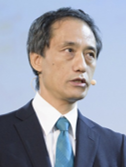Catchment Hydrology
Staff
Research Topics
Development of real-time forecasting system using hydrological model and data assimilation technique
|
Recently, flood damage has become serious problem around the world due to the changes in climate condition. Flood forecast system using hydrological model is useful tool to mitigate the flood damage. One of the main topis in our research team is to develop real-time flood forecasting system using distributed/lumped hydrological models and radar rainfall data. In addition, to improve forecasting accuracy, we introduce data assimilation techniques like Kalman Filter and Particle Filter into the forecasting system, and investigate the uncertainties caused by hydrological modeling including parameter setting and by weather/climate forcing data as an input to the hydrological models. |
  |
The impact assessment of climate change on hydrological cycle using hydrological model and climate scenarios. -Uncertainty analysis of impacts of climate change on snow processes-
|
The impact of climate change on snow water equivalent (SWE) and its uncertainty were investigated in snowy areas in Japan by using a snow process model and climate projections derived from general circulation models (GCMs). In particular, we examined how the uncertainty due to GCMs propagated through the snow model, which contained nonlinear processes defined by thresholds. The uncertainty analysis demonstrated that when the peaks of the distributions of daily mean temperature projected by GCMs cross the key thresholds set in the snow model, the GCM uncertainty, even if tiny, can be amplified by the nonlinear propagation through the snow process model. This amplification results in large uncertainty in projections of CC impact on snow processes. |
  |
Publication List
- KUDO Ryoji, YOSHIDA Takeo, MASUMOTO Takao (2017): Nationwide assessment of the impact of climate change on agricultural water resources in Japan using multiple emission scenarios in CMIP5, Hydrological Research Letters, 11(1), 31-36. DOI: 0.3178/hrl.11.31.
- Ryoji Kudo, Takeo Yoshida, Takao Masumoto (2017): Uncertainty analysis of impacts of climate change on snow processes: Case study of interactions of GCM uncertainty and an impact model, Journal of Hydrology, 548, 196-207. doi:10.1016/j.jhydrol.2017.03.007.
- Hidetaka Chikamori, Liu Heng, Trevor Daniel (2012), Catalogue of Rivers for Southeast Asia and the Pacific, Vol.VI, URL: http://hywr.kuciv.kyoto-u.ac.jp/ihp/riverCatalogue/Vol_06/index.html.

